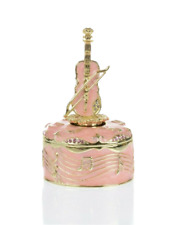
Researcher Francis W. M. R. Schwarze, from the Swiss Federal Laboratories for Materials Science and Technology, has used fungi to modify the wood in a modern violin to make it sound indistinguishable from a Stradivarius.
The wood used in making a violin plays a critical role in how the finished violin sounds. The particular qualities most sought after are in a wood are low density, high speed of sound through the wood, and a high modulus of elasticity.
In the early 18th century the famous violin maker Antonio Stradivari used wood that had grown in an unusual cold period between 1645 and 1715. In the long winters and the cool summers, the wood grew very slowly and evenly, with a low density and a high modulus of elasticity. But Stradivari’s wood of choice is no longer available, and modern violin makers struggle to find wood with comparable tonal qualities.
Now, however, Schwarze’s research could make Stradivarius quality wood available for modern violins. According to Schwarze, two species of fungi (Physisporinus vitreus andXylaria longipes) decay Norway spruce and sycamore to such an extent that their tonal quality is markedly improved.
“Normally fungi reduce the density of the wood, but at the same time they unfortunately reduce the speed with which the sound waves travel through the wood,” he explained. “The unique feature of these fungi is that they gradually degrade the cell walls, thus inducing a thinning of the walls. But even in the late stages of the wood decomposition, a stiff scaffold structure remains via which the sound waves can still travel directly.”
Importantly, says Schwarze, the modulus of elasticity of the wood is not compromised. This means the wood remains just as resistant to strain as before the fungal treatment – an important criterion for violin making. Finally, before the wood is made into a violin, it is treated with ethylene oxide gas which ensures that fungal growth is halted.
Using this so-called mycowood, Schwarze and violin makers Martin Schleske and Michael Rhonheimer created violins that were played in a blind, behind-the-curtain test that compared them to a 1711 Stradivarius. The result was surprising for all participants, according to Schwarze. Both the jury of experts and the majority of the audience thought that the mycowood violin was the actual Stradivarius.
With funding from the Swiss Walter Fischli Foundation, 30 additional violins are being made from mycowood. “The successful implementation of biotechnological methods for treating soundboard wood could in the future give young musicians the opportunity to play on a violin with the sound quality of an expensive – and for most musicians unaffordable – Stradivarius,” said Schwarze.
Related:
Discuss this article in our forum
Musical Instrument Quality Linked To Climate
Study identifies key aspects of music that evoke emotions in brain
Human music and speech biologically linked
Software maps evolution of musical taste to predict hits


















Comments are closed.